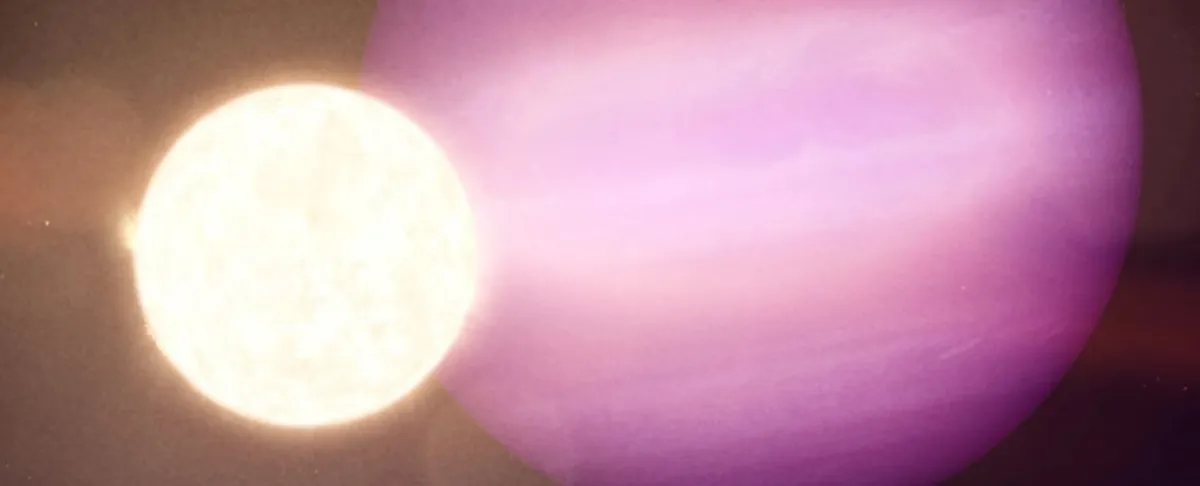
In 2020, astronomers made a groundbreaking discovery with the detection of WD 1856+534 b, a gas giant that orbits a star located 81 light-years from Earth. This exoplanet, classified as a super-Jupiter due to its mass being approximately six times that of Jupiter, holds the distinction of being the first transiting planet known to orbit a white dwarf (WD) star.
In a recent study, an international team of astronomers led by Mary Anne Limbach, an Assistant Research Scientist at the Department of Astronomy at the University of Michigan, Ann Arbor, shared their latest observations of WD 1856+534 b. Utilizing the Mid-Infrared Instrument (MIRI) aboard the James Webb Space Telescope (JWST), the researchers confirmed that this exoplanet is indeed the coldest ever observed, with an average atmospheric temperature of just 186 K (-87 °C; -125 °F).
The research team included experts from notable institutions such as the Kavli Institute for Astrophysics and Space Research at MIT, Johns Hopkins University Applied Physics Lab (JHUAPL), University of Victoria, University of Texas at Austin, Center for Interdisciplinary Research and Exploration in Astrophysics (CIERA), and the NSF NOIRLab and Gemini Observatory.
This significant research was part of the JWST Cycle 3 General Observation (GO) program, aimed at utilizing Webb's advanced infrared optics and spectrometers to directly characterize exoplanets. One of the key objectives of the JWST is to enhance our understanding of exoplanets through the Direct Imaging Method. This technique involves observing light reflected from an exoplanet's surface or atmosphere and analyzing it with spectrometers to identify potential biosignatures such as oxygen, nitrogen, methane, and water.
By employing next-generation telescopes like the JWST, astronomers hope to uncover the first definitive evidence of life beyond our Solar System. Emission spectra obtained from these planets can also provide insights into their composition and migration history, although detecting light directly from an exoplanet remains a complex challenge. The overwhelming brightness of host stars has largely confined direct imaging to massive planets, particularly gas giants with wide orbits or extremely high atmospheric temperatures.
Interestingly, no terrestrial or rocky exoplanets have been observed in close orbits around their stars. Moreover, no exoplanets with emission spectra cooler than 275 K (1.85 °C; 35.33 °F) have been found. However, white dwarf stars present a unique opportunity for detecting and characterizing colder exoplanets. The low luminosity of WDs significantly reduces the contrast issues that typically impede direct detection methods around their more luminous main-sequence counterparts.
As remnants of stars similar to our Sun, white dwarfs provide crucial insights into the future of planetary systems following stellar death. Understanding how planets interact with and survive the post-main-sequence evolution of their stars is vital for grasping concepts such as orbital stability, dynamical migration, and possible planetary engulfment.
For their study, Limbach and her team confirmed the presence of WD 1856+534 b using the Infrared (IR) excess method with data from JWST's MIRI. Their findings allowed them to refine the mass of WD 1856+534 b, establishing it at no more than six times that of Jupiter, a significant reduction from previous estimates of 13.8 Jupiter masses. This research marks the first direct evidence that planets can survive and migrate into close orbits near the habitable zones of white dwarfs.
Looking ahead, the team is eager for further observations of WD 1856 b, scheduled for 2025 with the JWST. These upcoming observations may help identify additional planets, potentially revealing whether WD 1856 b was perturbed into its current orbit. Furthermore, initial results from observations made by Webb's Near-Infrared Spectrometer (NIRSpec) during Cycle 1 will soon be released, offering an initial characterization of the planet's atmosphere.